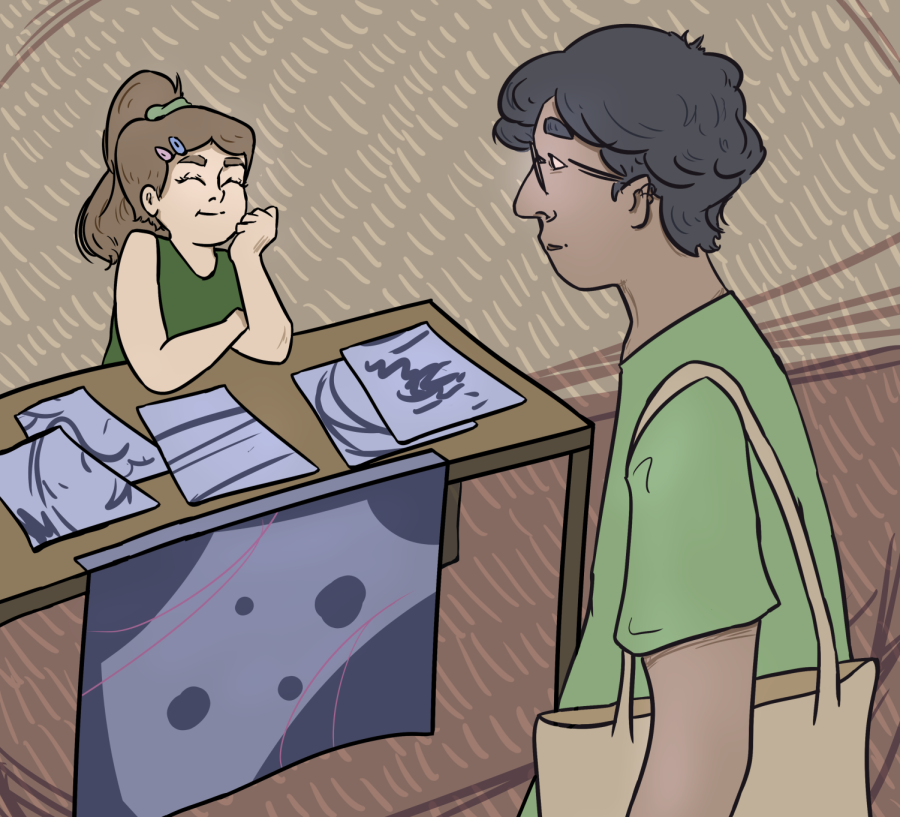Local artist, University Co-op, Austin City Council support revitalization of art market
October 13, 2022
Once, when police officers blew their whistles, artists lined up against the walls surrounding the Renaissance Artists Market ran back to their booths. One of those artists, Randy Eckels, said the once-bustling art market has changed over the years and no longer fosters the same chaos and life.
“It was pretty wild and wooly back then,” Eckels said. “We had more people with spots back then, so it was pretty hectic for a while.”
Fifty years after the 23rd Street Renaissance Artists Market opened to the public in 1972, the market stands temporarily closed steps away from UT. Despite its closure, Eckels and a few other artists continue to sell their work in the square on Guadalupe Street between the University Co-op and Dollar Slice Club.
However, the Austin City Council looks to revitalize the market for artists and its customers, approving the elimination of the $200 annual vendor license fees in the Austin City Council meeting on Sept. 29. Kathie Tovo, a city council member who co-sponsored the ordinance, said she hopes drawing attention to the artists will lead to a renaissance for the market.
“My hope is that waiving the vendor fees will encourage more artists to participate in the Renaissance Market,” Tovo said. “Along with other changes, I’m hoping that will help the Renaissance become an active market again as it has been for much of the 50 years of its existence.”
Other changes within the Austin City Council ordinance increase marketing and establish specified market days each week. According to Tovo, the Renaissance Artists Market will also be using money raised throughout its existence to hire security services for certain days of the week to make the market safer for artists and patrons. Tovo said she hopes these additional items will contribute to building back the Renaissance Market.
Cheryl Phifer, University Co-op president and CEO, said reinvigorating the Renaissance Artists Market will not only aid local artists, but also aid businesses along that stretch of Guadalupe Street.
“Having more interest in the general area and more things that bring customers, students and community into the area is good for all the businesses on Guadalupe,” Phifer said. “It shows the varied communities and citizens that we have here in Austin. It makes the University area that much more interesting when we have a really vibrant art community.”
Tovo said a variety of aspects contributed to the market’s decline, including artists receiving more opportunities at farmers markets, festivals and online platforms such as eBay and Etsy. Additionally, both Tovo and Eckels said the COVID-19 pandemic resulted in difficulties for the Renaissance Artists Market.
“It was getting pretty sluggish before the pandemic, and then the pandemic locked us down, and the University closed for almost two years, (causing) no foot traffic,” Eckels said. “That’s why a lot of stores have closed.”
Despite ongoing development along Guadalupe Street and throughout Austin, Eckels maintains a hope that the market is here to stay, looking forward to seeing more customers and artists engaging in the public art market and learning about the craft.
As Austin’s development and population rise, Tovo said she feels open to the idea of using the space for something other than an art market as long as it continues to positively serve the city of Austin.
“If the world has changed so much that that spot is not the right place for that market, then I hope we will figure that out soon and figure out another great use for that space so that the public square has some kind of activity,” Tovo said. “I want there to be a really intentional, positive (and) active use for that space.”











